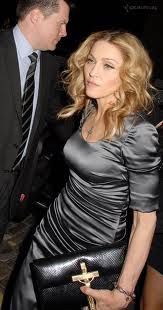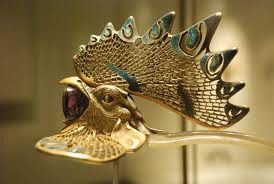Gradually these garments were lengthened and tightened. By the time they were teenagers, the girls were unable to sit or stand for any length of time without the aid of a heavy canvas corset reinforced with whale bone or steel. The corset deformed the internal organs making it impossible to draw deep breath, in or out of a corset. Because of this, Victorian women were always fainting and getting the vapors.
Women were thought of as the weaker sex, therefore their minds and bodies were weak. So the corset was deemed morally and medically necessary. Tight lacing was considered virtuous - a loose corset was probably a sign of a loose woman. To keep her innocence and virtuosity, a lady had to be chaperoned everywhere she went. She could not read or see any plays lest it excite her imagination. Even Shakespeare was thought unsuitable for ladies. A woman needed to protect herself from lustful men (and her own morality) by wearing heavily reinforced layers of clothing and tight corsets that made getting undressed a long and difficult task.
 Working-class women (except when dressed for special occasions) did not go through the discomfort of wearing tightly laced corsets. They wore looser corsets and simpler clothes, with less weight. The higher up in class a lady was, the more confining her clothes were. This was because they didn't need the freedom to do household chores. Paid servants took care of such cumbersome matters.
Working-class women (except when dressed for special occasions) did not go through the discomfort of wearing tightly laced corsets. They wore looser corsets and simpler clothes, with less weight. The higher up in class a lady was, the more confining her clothes were. This was because they didn't need the freedom to do household chores. Paid servants took care of such cumbersome matters. The corset is an interesting garment, which to most people in our modern world seems a very strange piece of underwear. We have all heard about the times when women were encased in long stiff corsets, reduced to nothing but objects of beauty, unable to perform any task. This is, however, only a part of the historical facts about that time - and about corsets.
When talking corsetry, the most interesting period of fashion is the period from 1820 to about 1910. But the corset is much older than that. In Europe, it has been in general use as an undergarment since the middle ages, but it probably dates several thousands of years back. The corset has at all times been used for shaping the body, most often for compressing the waist, but sometimes for raising the bust.
The most widespread use of corsets was in the 19th century. Contrary to common belief, almost all women of every class wore corsets in those times. Fashion was formed by the upper class, so they were the primary users of the 'fashion devices' like corsets and the crinoline, but the working classes followed the trends of fashion to as high a degree as possible. For example, the Courtaulds Company instructed its workers in 1860, that: "The present ugly fashion of hoops or crinolines ... is ... quite unfitted for the work of our factories. ... We now request our hands at all factories to leave hoop and crinolines at home." [Steele, p. 75].
A compelling question is of course, how tightly were the corsets laced? There are many reports of waists between 18 and 14 inches - even 12 inch waists are mentioned. [Steele, p. 163] However, it is believed that most accounts of these very small waists represent fantasies. Measurements of corsets in museum collections indicate that most corsets of the period 1860 to 1910 measured from 20 to 22 inches. Furthermore, those sizes do not indicate how tightly the corsets were laced. They could easily have been laced out by several inches, and probably were, because it was prestigious to buy small corsets. So ordinary corsets were not so tight after all, and contrary to common belief, the construction of the corset with the metal busk for front closure and the lacing in the back, enabled the bearer to lace herself in. She did not need a maid or husband to help her. As an analogy in our time, we have several degrees of plastic surgery. There are the subtle cosmetic procedures on the face, a slight breast lift and then there are the extreme breast augmentation and lip plumping. But between enhancement and radical transformation, as in plastic surgery, it was more commonly the former.
Severe tight-lacing was practiced, and some corsetieres specialized in cultivating very small waists. Some men developed a fetish for small waists, a fetish which was regarded as quite acceptable. Small waists and the corset probably played about the same role as full breasts and the Wonder bra play today
Return of the corset
































